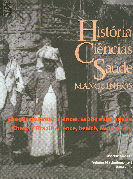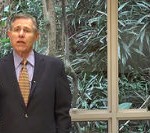April 2024

TECNO-ITINTEC museum that opened in Salaverry Avenue in Lima. Photo taken in private communication with Jorge Heraud
In the paper, The first interactive science museum in Peru: the origin and creation of TECNO-ITINTEC, 1975-1979, Alejandra Ruiz-Leon, Ph.D. Student in the School of History and Sociology at the Georgia Institute of Technology, analyzes how the museum resulted from the negotiation between its founder’s motivation to popularize science and inspire future generations of scientists and the military government’s interest in industrialization.
The paper, published in the 2024 volume of HCS-Manguinhos, shows how scientists used their agency to create a science museum separate from the original plans of the ITINTEC, the institution that hosted the museum. This history demonstrates Latin America’s early contribution to this innovative means of science popularization and interactive science museums. The paper is the first effort to reconstruct the ITINTEC museum’s history, which was later closed in 1993.
The TECNO-ITINTEC museum was overseen by the Institute of Industrial Technology Research and Technical Standards, the ITINTEC in TECNO-ITINTEC. The Institute’s stated mission was to promote industrial research and establish the technical norms that were to be used in Peru. To do so, the Institute received direct funding from a portion of all Peruvian companies’ taxes. As the paper shows, the museum was not initially part of ITINTEC’s mission or functions; instead, it was the personal interest of Jorge Heraud, the president of the Institute’s board of directors, and Jose Castro Mendívil, who became the museum’s first director.
Heraud and Castro Mendívil created the artifacts that constituted the museum’s exhibition of hands-on experiments and organized other activities such as workshops. The paper also reports the connections the promoters made to position TECNO-ITINTEC with museums abroad, how they aligned the museum’s objectives to fit the Institute’s, and how the museum was covered at the time (Castro Mendívil 1977; Aprile 1979). Sources include archival research in the ITINTEC archive, interviews with actors involved in the museum, and newspapers.
The paper is the first publication dedicated solely to the history of the TECNO-ITINTEC museum, which remains an unknown chapter of the history of science museums, the history of science in Peru, and the history of science more generally. Moreover, it confirms the opening date of March 23, 1979, which makes TECNO-ITINTEC one of the first interactive science museums in Latin America (Expresso 1979). The paper provides a more profound understanding of the museum’s early years, which is crucial for future research on the museum’s closure in 1993, when the ITINTEC dissolved as part of the economic measures of Alberto Fujimori’s first mandate, once again beholden to political whim.
References
Aprile, Jorge C. 1979. “Muestra de Ciencia, Tecnología e Industria Exhiben Desde Mañana.” El Comercio, April 15, 1979, sec. Locales. Biblioteca Nacional del Perú.
Castro Mendívil, José. 1977. “Informe Museo de Ciencia y Tecnología.” Lima, Peru: ITINTEC. INDECOPI.
Expresso. 1979. “Museo Tecnológico Inaugura ITINTEC,” March 19, 1979. Biblioteca Nacional del Perú.
Photo: TECNO-ITINTEC museum that opened in Salaverry Avenue in Lima. Photo taken in private communication with Jorge Heraud






